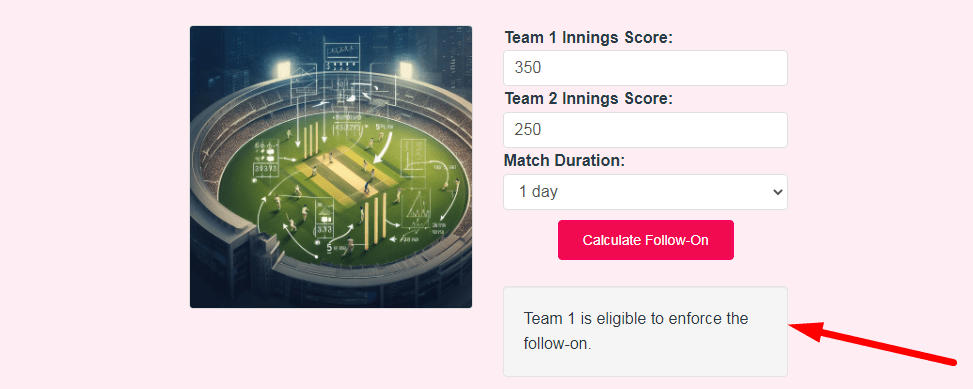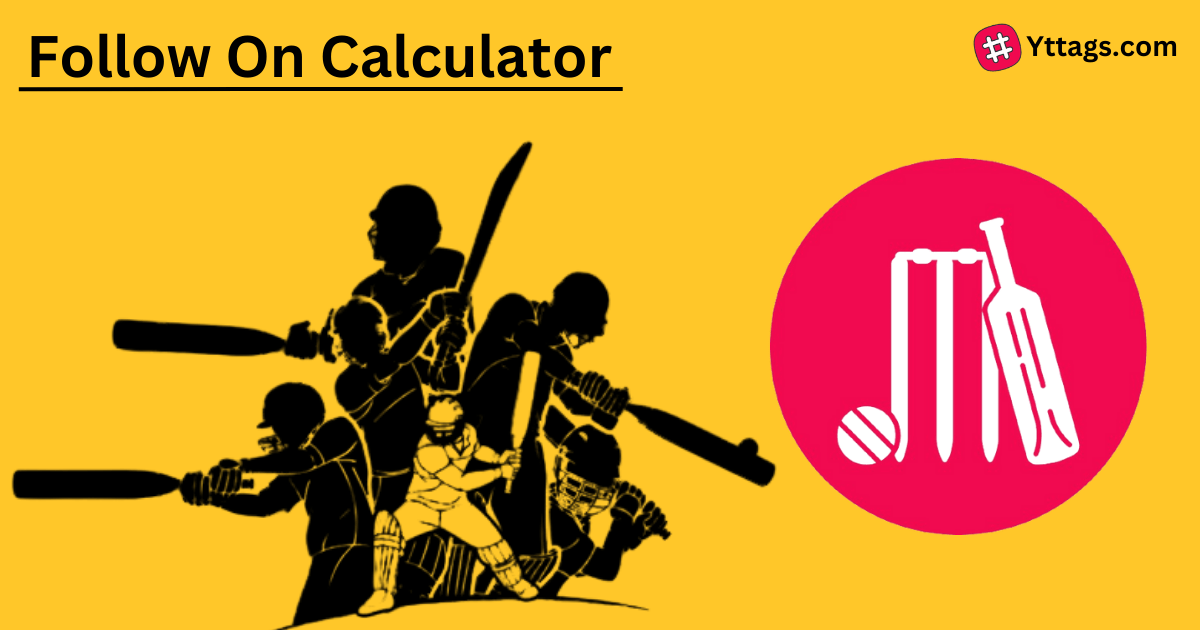Follow On Calculator
In Cricket, a team who is forced to follow-on has to take their second inning immediately after their first. Follow-on can only be forced on the team that bats second and does not score enough runs in their first inning. Check if you can enforce the follow-on using our cricket follow-on calculator.

If you use this great tool then please comment and/or like this page.
Average Rating: Tool Views: 439
Average Rating: Tool Views: 439
Subscribe for Latest Tools
How to use this Follow On Calculator Tool?
How to use Yttags's Follow On Calculator?
- Step 1: Select the Tool

- Step 2: Enter Team 1 Innings Score & Team 2 Innings Score & Select Match Duration And Click On Calculate Follow-On Button

- Step 3: Check Your Follow On Calculator Result

If you want to link to Follow On Calculator page, please use the codes provided below!

FAQs for Follow On Calculator
What is a Follow On Calculator?
A Follow-On Calculator typically refers to a financial tool used to estimate the costs and returns associated with investing in a follow-on round of funding for a startup or business expansion.
What is follow-on rule?
The follow-on is an optional rule in cricket where the team that batted second may be asked to play out its second innings shortly after its first by the opposition.
What happens after follow-on?
If a team batting second finishes with a total which is ATLEAST 200 runs less than the total of the team batted first , then they can be asked to follow on. That is, they will be asked to bat again and try to surpass the Lead. If they fail to do so then the opponent wins the game by an Innings .
What is follow-on for 470 runs?
Follow on is a cricket term . It is meant for the team batting second . In a test match when a team batting second concedes a lead of 200 or more than 200 runs the fielding captain may ask the team batting second to play their second inning. This is called to force a follow on .
What are the advantages of follow-on?
The follow-on can be enforced by the team who batted first, and is intended to reduce the probability of a drawn result, by allowing the second team's second innings to be completed sooner and to avoid a team who were significantly better in their first innings from having to sub optimally declare their second innings ...